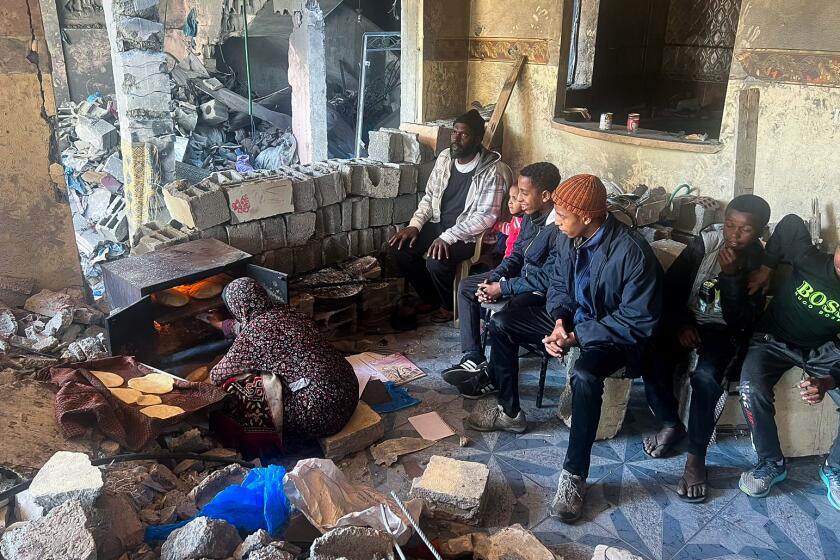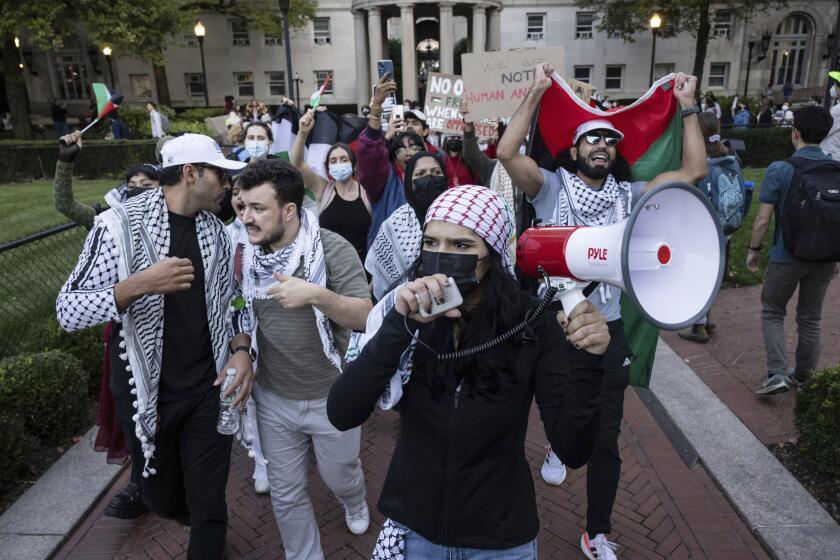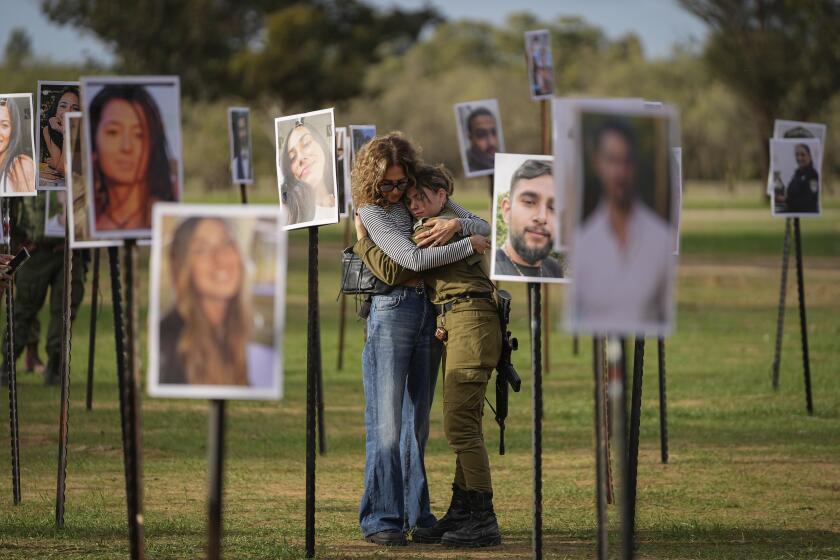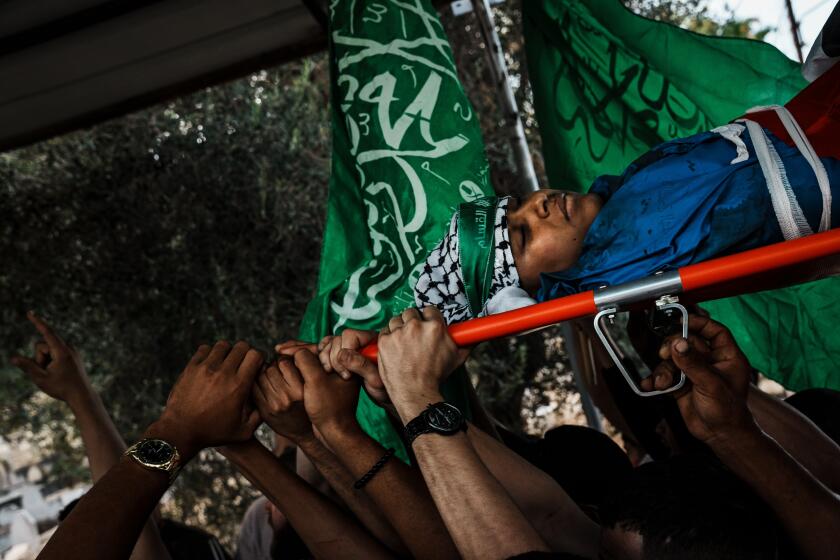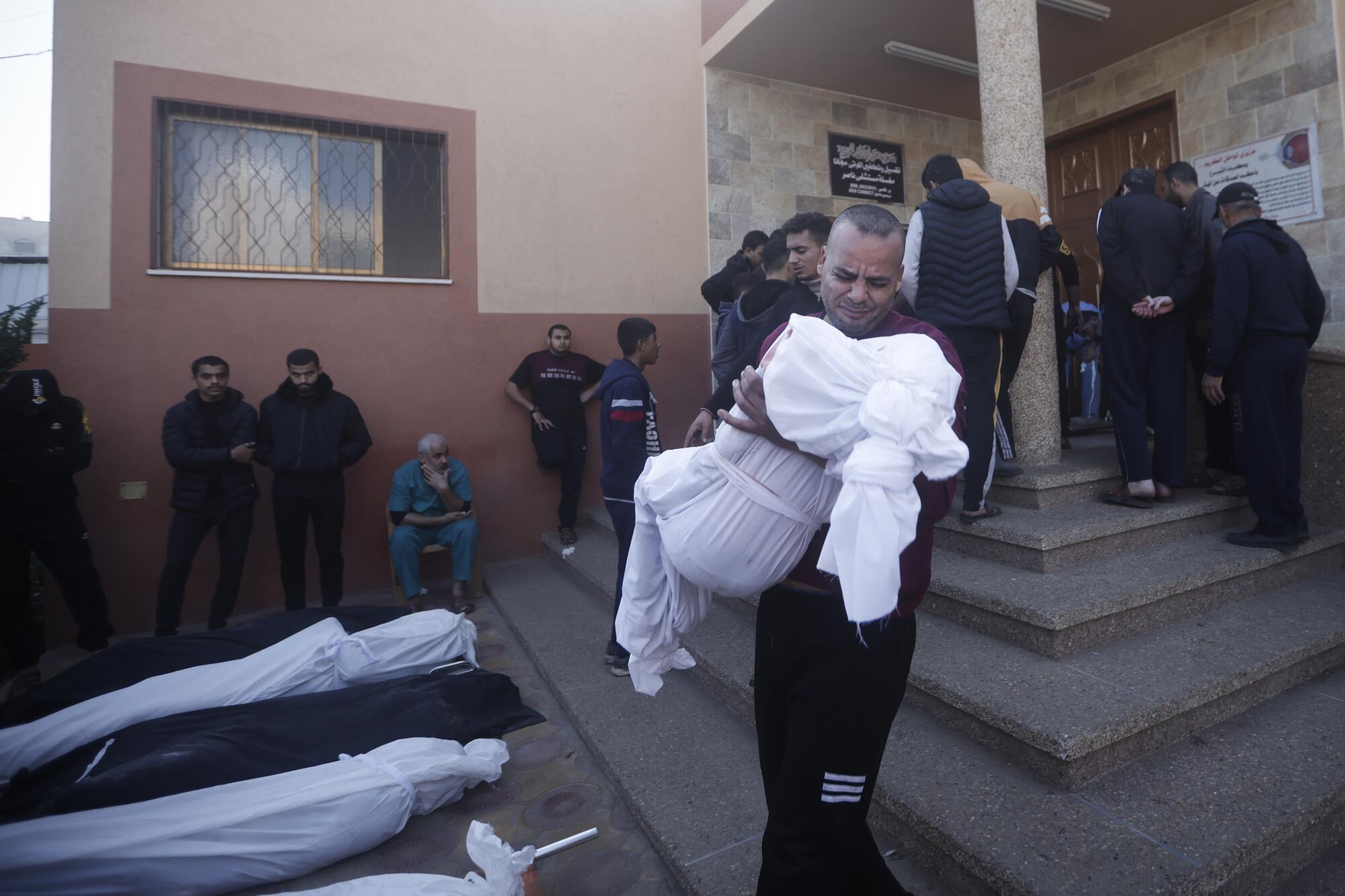
RAFAH, Gaza Strip — Israel said Friday that the military was rounding up Palestinian men in northern Gaza for interrogation, searching for Hamas militants, while desperate Palestinians in the south crowded into an ever-shrinking area, and the United Nations warned that its aid operation is “in tatters.”
The detentions pointed to Israeli efforts to secure the military’s hold on northern Gaza as the war entered its third month. Furious urban fighting has continued in the north, underscoring Hamas’ heavy resistance, and tens of thousands of residents are believed to remain in the area six weeks after troops and tanks rolled in.
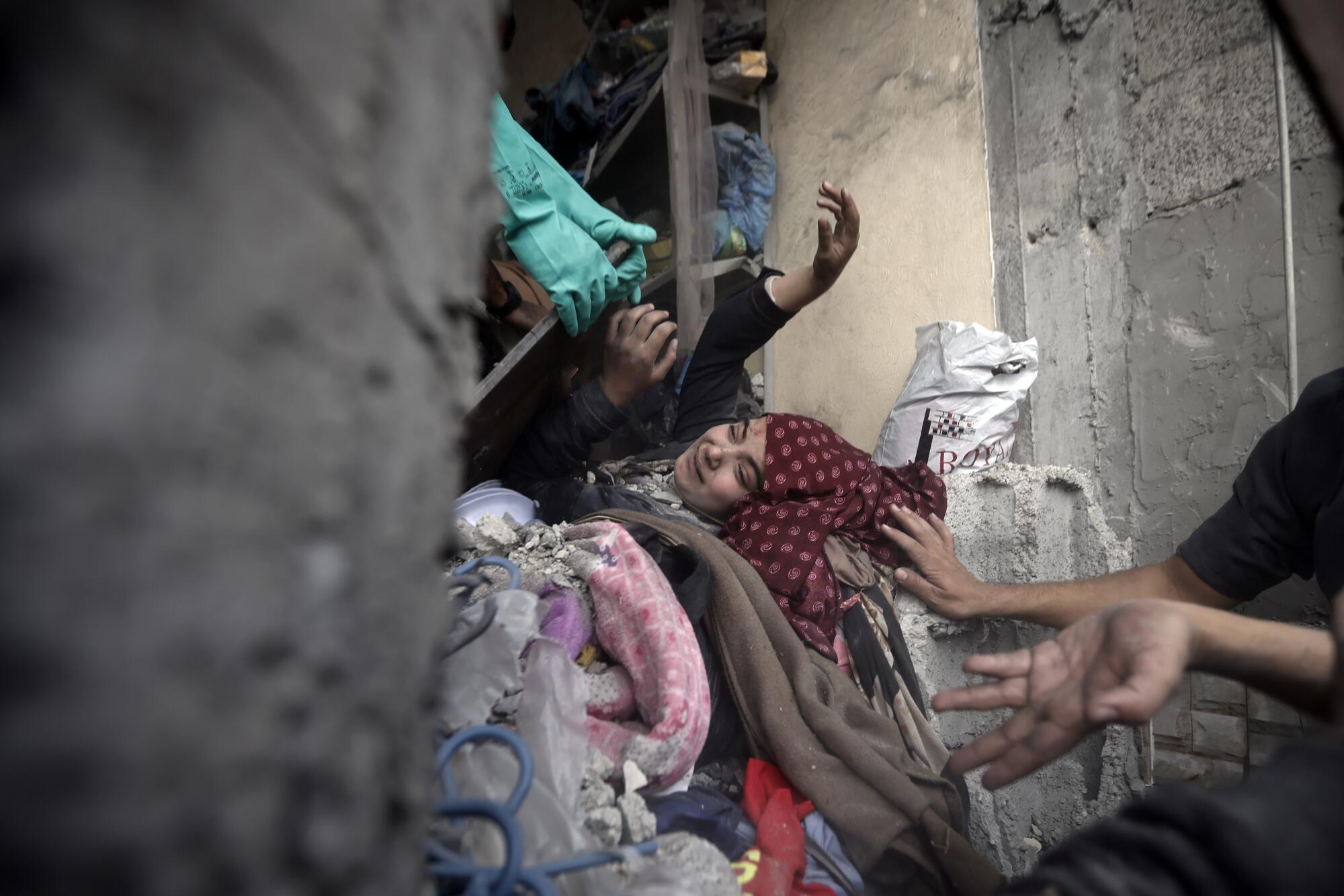
The first images of mass detentions emerged Thursday from the northern town of Beit Lahiya, showing dozens of men kneeling or sitting in the streets, stripped down to their underwear, their hands bound behind their backs and some with their heads bowed. U.N. monitors said Israeli troops reportedly detained men and boys 15 and older in a school-turned-shelter.
In other developments, the United States vetoed a U.N. resolution backed by the vast majority of Security Council members and many other nations demanding an immediate humanitarian cease-fire in the Gaza Strip. The vote in the 15-member council was 13-1 with the United Kingdom abstaining.
‘I just don’t know where we’ll go.’ It’s a question Palestinians ask over and over in Gaza as Israel ramps up bombardment after Hamas truce collapsed.
U.N. Secretary-General António Guterres told the council that Gaza is at “a breaking point” and “there is a high risk of the total collapse of the humanitarian support system.”
Israel has vowed to crush the military capabilities of Hamas, which rules Gaza, and remove it from power after the group’s Oct. 7 attack that sparked this latest war.
Israel’s air and ground assaults initially focused on the northern half of Gaza, leading hundreds of thousands of residents to flee south. A week ago, Israel expanded its ground assault into central and southern Gaza, where nearly the territory’s entire population of 2.3 million Palestinians are crowded, many cut off from humanitarian supplies.
In central Gaza, Israeli planes Friday dropped leaflets on the refugee camps of Nuseirat and Maghazi.
The Palestinian cause — and hostility toward Israel — has shifted from the sidelines of student activism to a robust political movement at U.S. colleges.
“To Hamas leaders: A life for a life, an eye for an eye and whoever started is to blame. If you punish, then punish with the like of that with which you were afflicted,” the leaflet read, cobbling together a popular Arabic saying with a verse from the Islamic holy book, the Quran.
The leaflet left out the rest of the Quranic verse, which says it is better to patiently endure afflictions without retaliating at all.
Hours later, a strike shattered a residential building in the Nuseirat camp, killing at least 21 people, according to officials at the nearby hospital. After the blast, residents were seen digging beneath the rubble, looking for survivors and belongings that could be unearthed.
Hundreds rounded up
Israeli government spokesman Eylon Levy said Friday that those detained in northern Gaza were “military-aged men who were discovered in areas that civilians were supposed to have evacuated weeks ago.”
Military spokesman Daniel Hagari said that in the last 48 hours, some 200 people have been detained. Dozens have been taken to Israel for interrogation, including Hamas commanders, he said.
Authorities were questioning the detainees to determine whether they were members of the militant group, Levy said, indicating there would be more such sweeps going forward as troops move from north to south.
The London-based news outlet Al Araby Al Jadeed, or the New Arab, said that one of the men seen in the photos of detainees is its Gaza correspondent Diaa Kahlout, and that he was rounded up with other civilians.
The Israeli assault has obliterated much of Gaza City and surrounding areas in the north. Still, tens of thousands of residents are believed to remain there, though the U.N. says it cannot confirm exact numbers. Some are unable to move and others refuse to leave their homes, saying the overcrowded south is no safer or fearing they will not be allowed to return.
Heavy fighting has been underway for days in the Jabaliya refugee camp and the Gaza City district of Shujaiya. The U.N. said Jabaliya’s Al Awda Hospital — one of two hospitals still operating in the north — was surrounded by Israeli forces and sustained damage from Israeli shelling. It said Israeli sniper fire into the hospital has also been reported.
On Thursday in Shujaiya, a prominent poet and English professor, Refaat Alareer, was killed, along with his brother, sister and her four children, when Israeli shelling hit the house they were staying in, according to colleagues at We Are Not Numbers, a nonprofit he helped found.
Days earlier, Alareer wrote on the platform X, formerly Twitter, that his walls were shaking with the thunder of bombing, shelling and gunfire that were drawing closer. The last poem he wrote and shared on social media read, “If I must die/ let it bring hope/ let it be a tale.”
The Israeli military asserts that it tries to spare civilians and accuses Hamas of using them as human shields as the militants fight in dense residential areas.
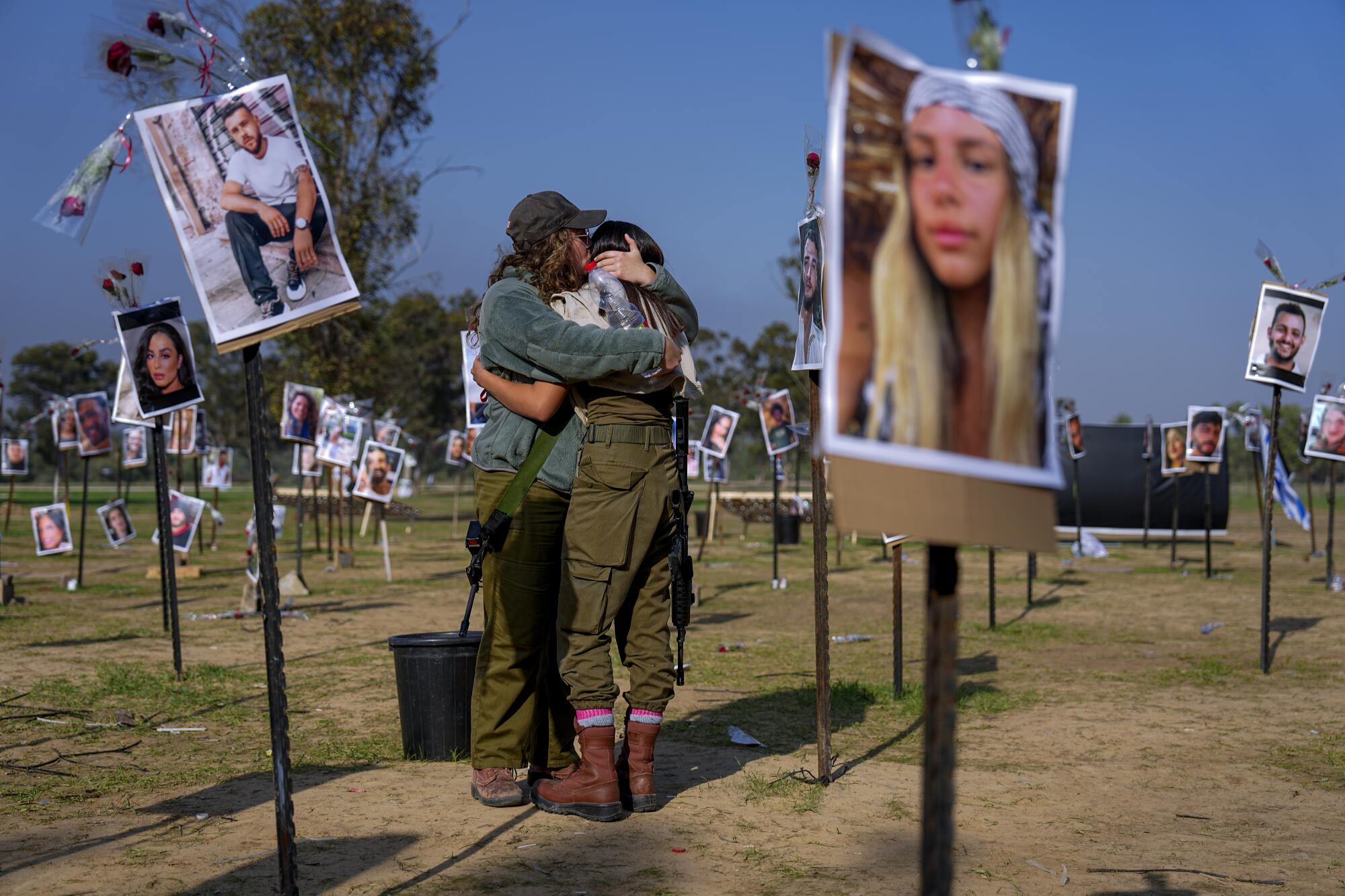
Early Friday, Israeli troops made an unsuccessful attempt to free Israeli hostages at a location in Gaza. In the ensuing clash with militants, two soldiers were seriously wounded, and no hostages were freed, the military said. Hamas said its fighters fended off the attempt.
As the Palestinian militant group Hamas frees more hostages amid a temporary truce with Israel, a harrowing glimpse of captivity in war-torn Gaza emerges.
Israel says 137 hostages are still in captivity out of the roughly 240 abducted by militants during the Oct. 7 attack.
There has also been a dramatic surge in deadly military raids and an increase on restrictions on Palestinian residents in the occupied West Bank.
Israeli forces stormed into a refugee camp in the West Bank on Friday to arrest suspected Palestinian militants, unleashing fighting with local gunmen in which six Palestinians were killed, health officials said.
Violence surges in the West Bank as Israel increases raids to root out militants. Palestinians say the military is using the war as an excuse to crack down.
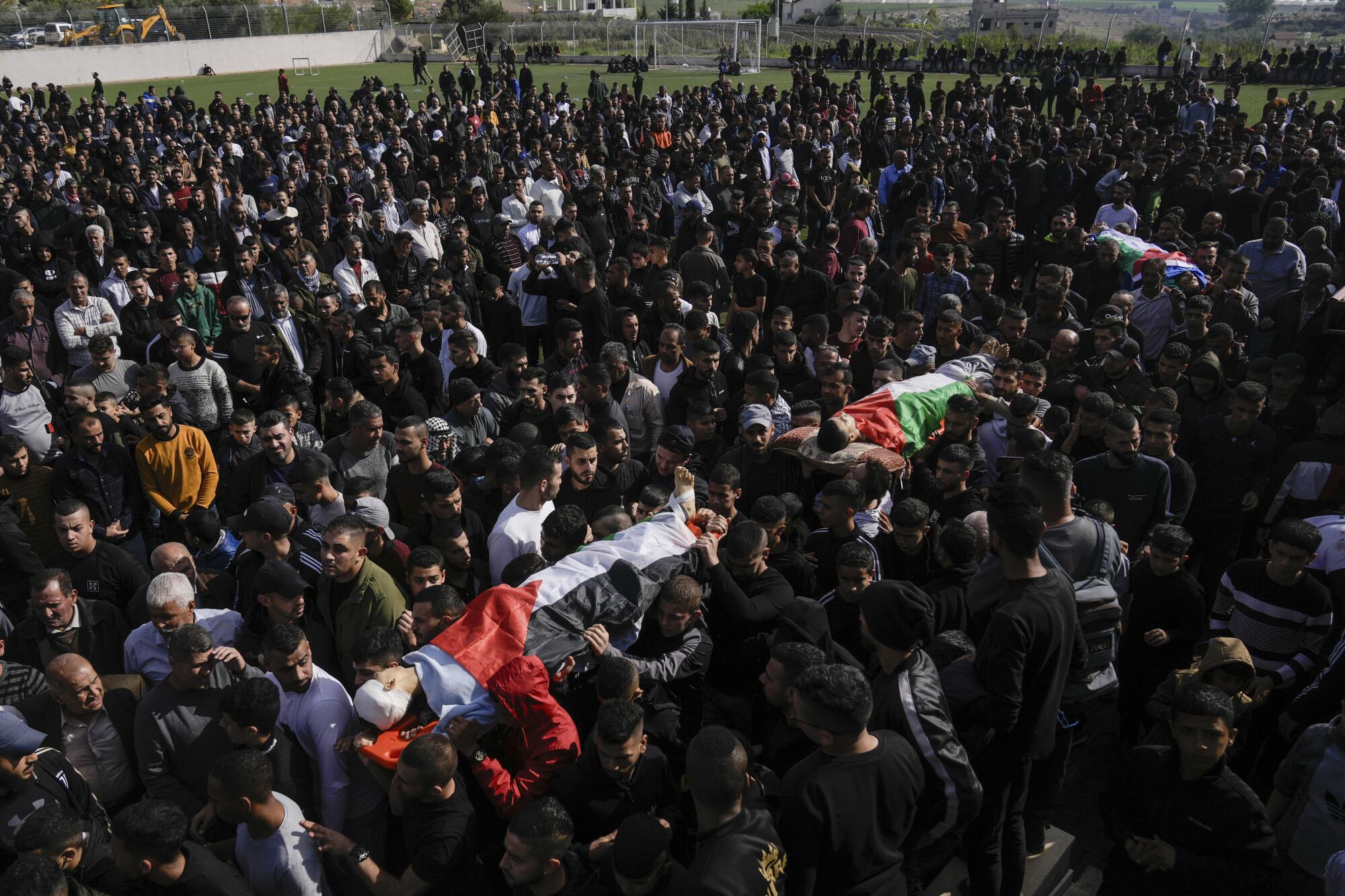
Impending catastrophe
The continuation of tough fighting in the north raises fears that Israel’s move south to uproot Hamas will wreak similar devastation.
Israeli troops have been battling Hamas fighters inside the southern city of Khan Yunis, while strikes have continued to pound nearby Deir al Balah. A strike Friday on a residential building in Zawaida, outside Deir al Balah, killed at least 20 people from families sheltering there, according to the Aqsa Martyrs Hospital.
Tens of thousands of people displaced by the fighting have packed into the border city of Rafah, in the far south of the Gaza Strip, and Muwasi, a nearby patch of barren coastline that Israel declared a safe zone. But the U.N. and relief agencies have called that a poorly planned solution.
“We do not have a humanitarian operation in southern Gaza that can be called by that name anymore,” the U.N.’s humanitarian chief, Martin Griffiths, warned Thursday. Israel’s military assault “has made no place safe for civilians in southern Gaza, which had been a cornerstone of the humanitarian plan. ... That plan is in tatters.”
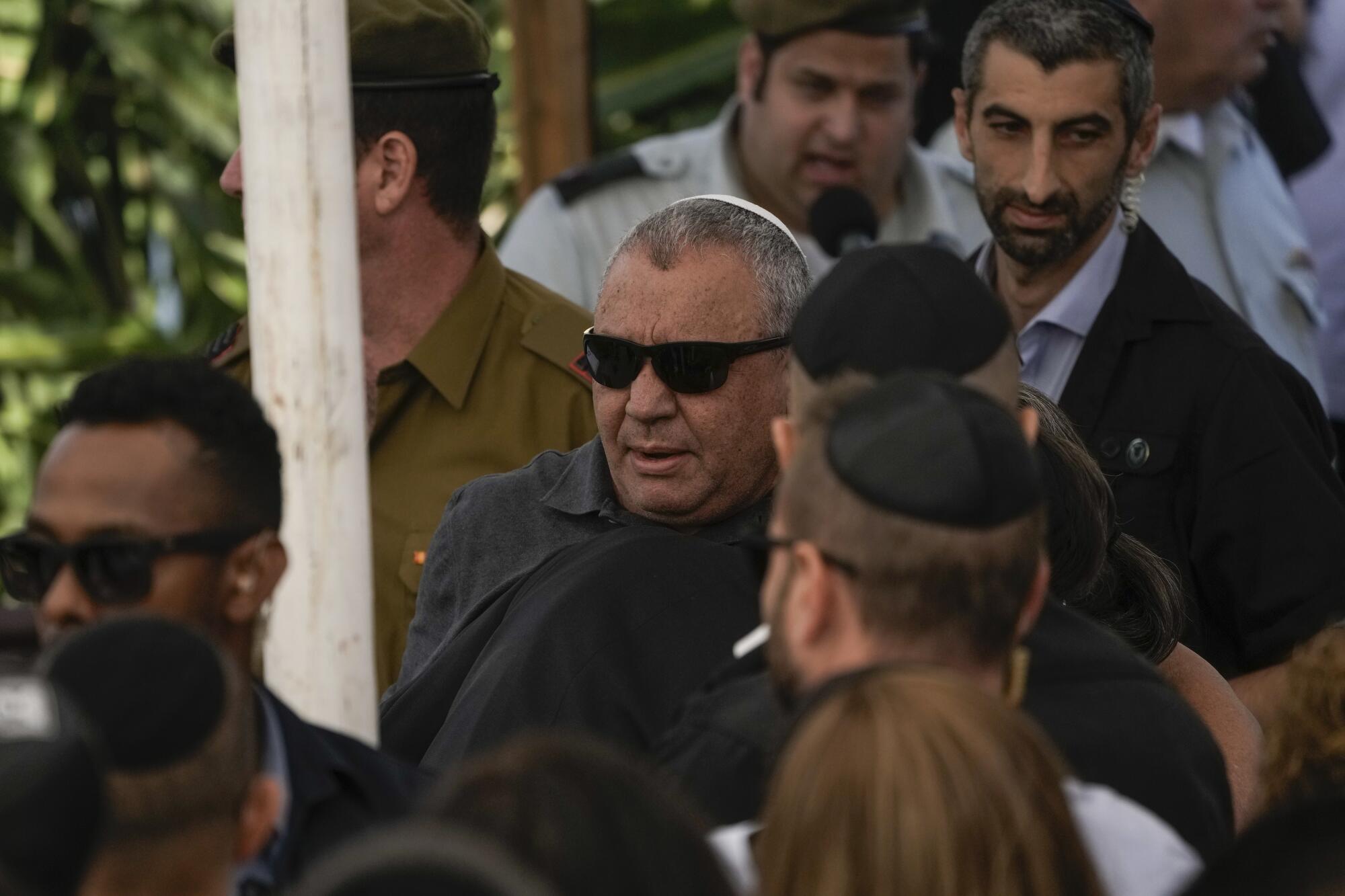
Israel’s military campaign has killed more than 17,100 people in Gaza — 70% of them women and children — and wounded more than 46,000, according to the territory’s Health Ministry, which says many others are trapped under rubble. The ministry does not differentiate between civilian and combatant deaths.
Hamas and other militants killed about 1,200 people, mostly civilians, in the Oct. 7 cross-border attack, Israel says. The military says 93 of its troops have been killed in the ground campaign.
More to Read
Sign up for Essential California
The most important California stories and recommendations in your inbox every morning.
You may occasionally receive promotional content from the Los Angeles Times.
